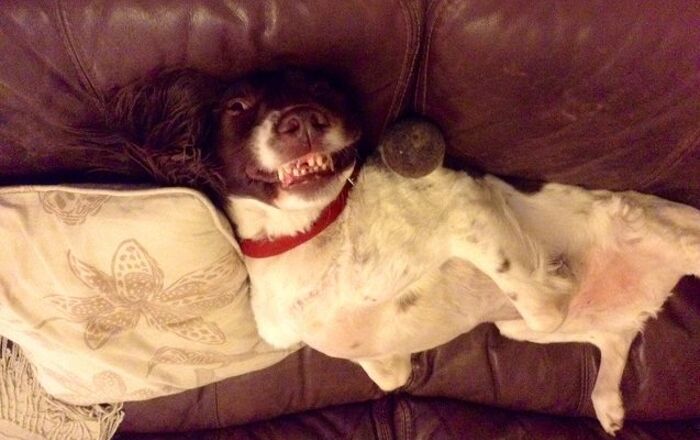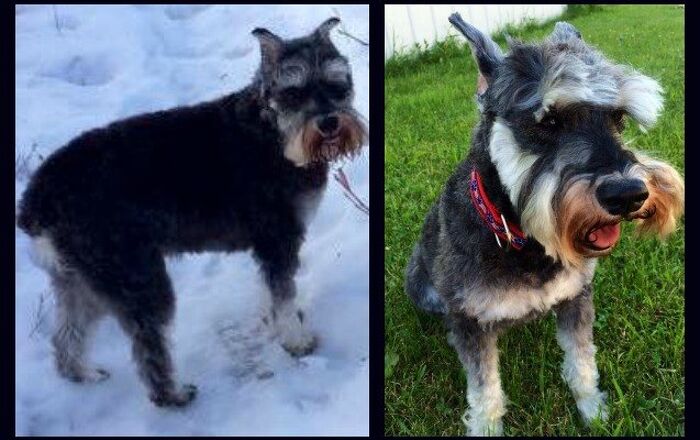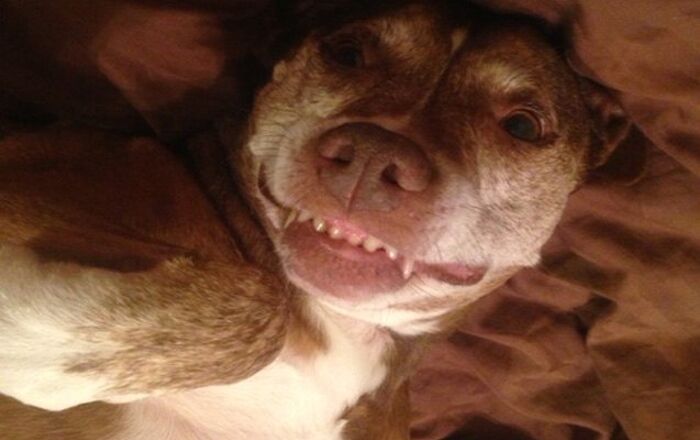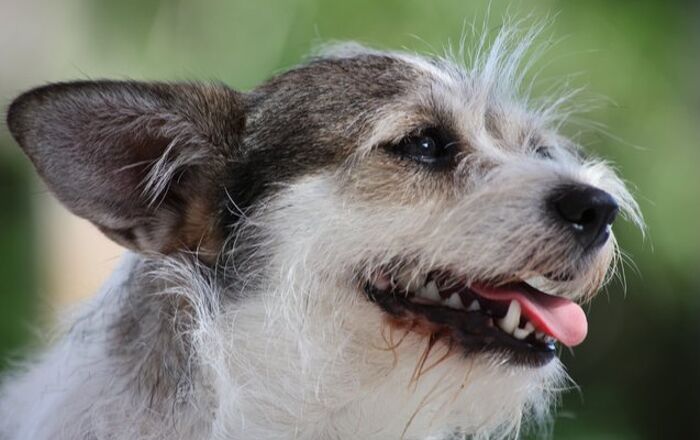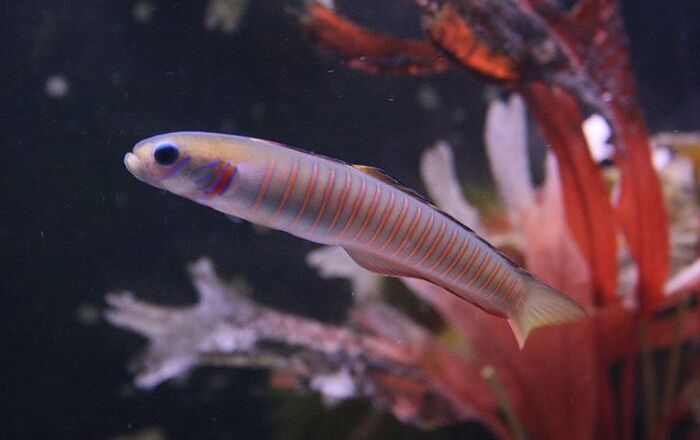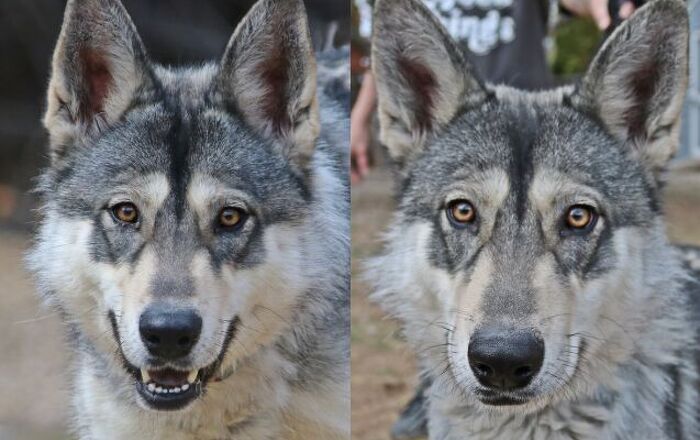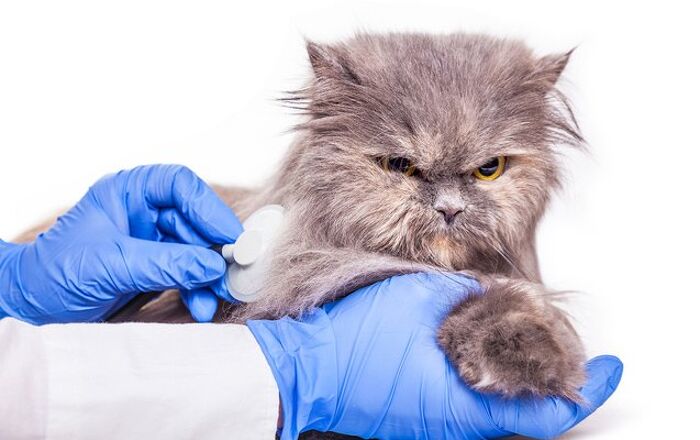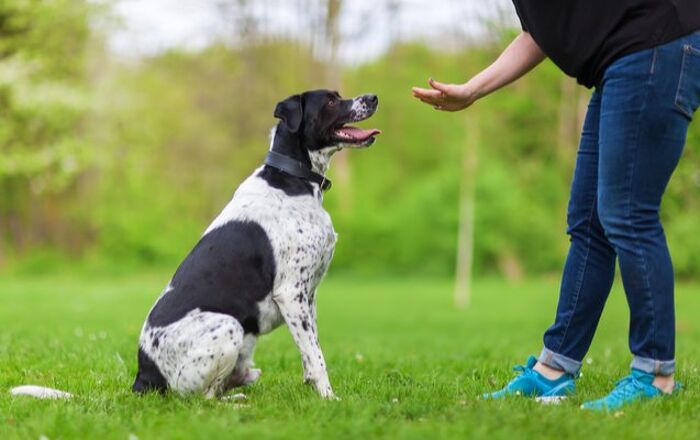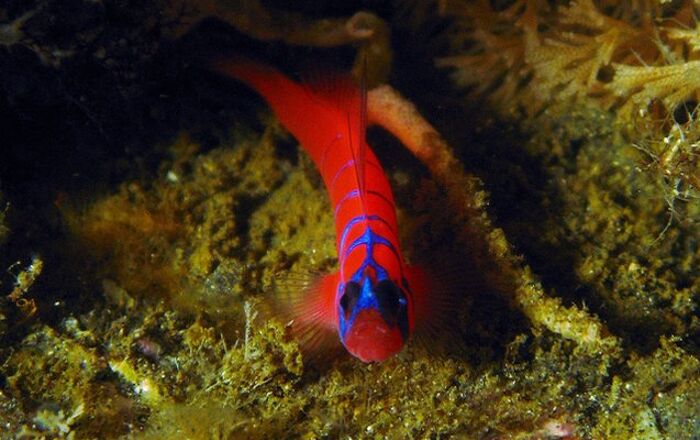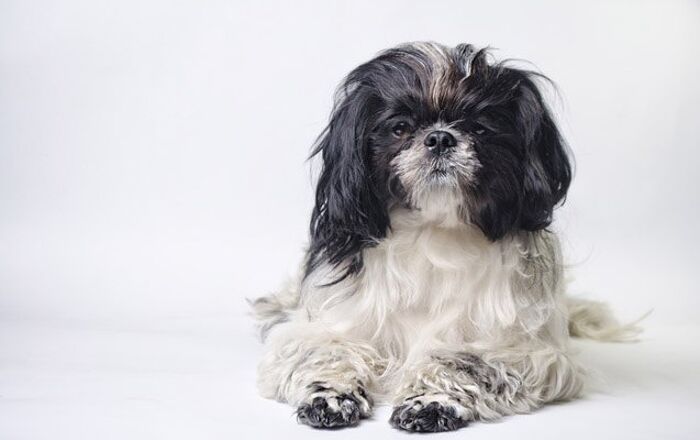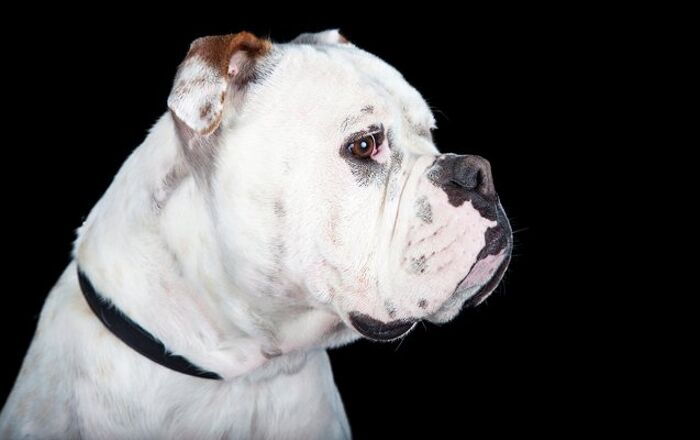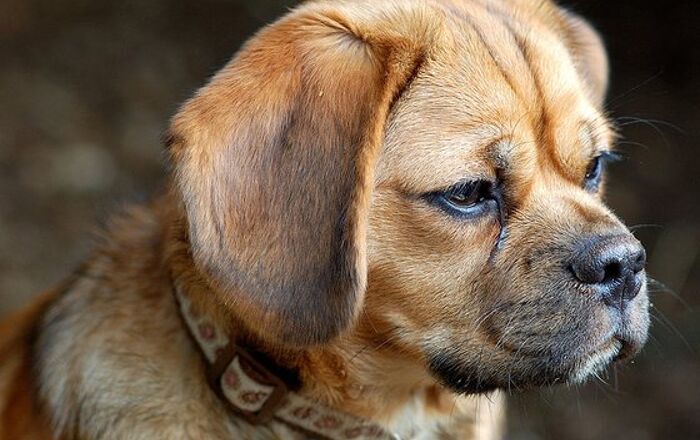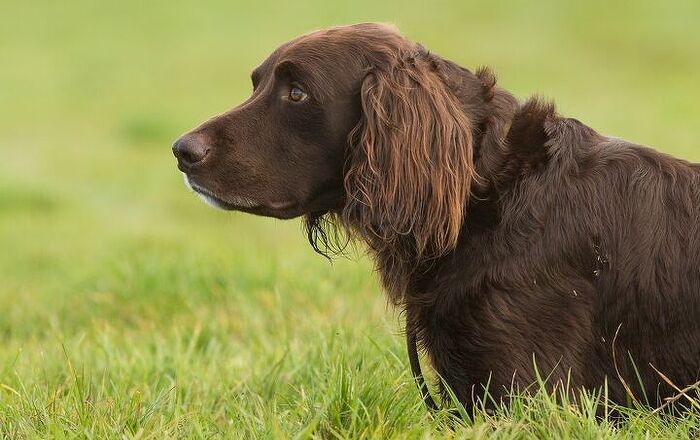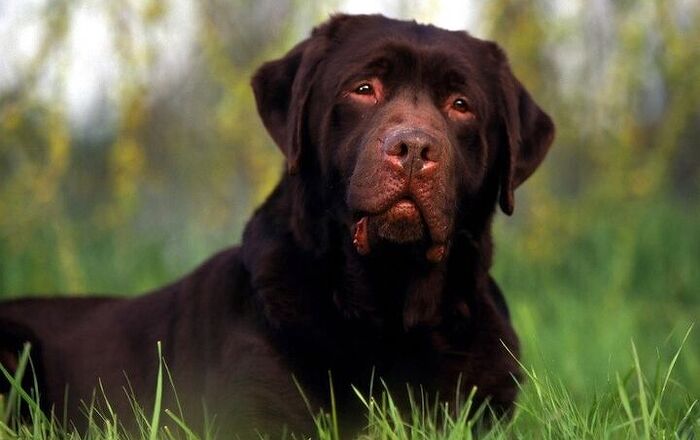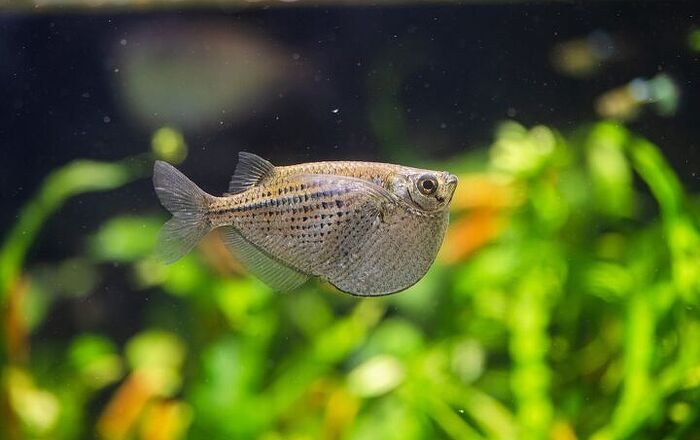EDIT: It has been brought to our attention that there is reason to doubt the origin and genetics of the breed known as Native American Indian Dog (NAID), so we did thorough research and updated the article which now reflects our latest findings about the real history behind this dog breed.
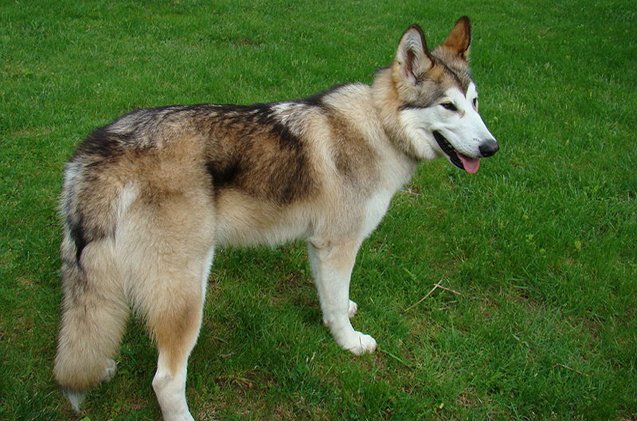
Native American Indian Dog Basics
The Native American Indian Dog is a wolf-looking dog with a majestic physique. These dogs can grow to be fairly large, achieving a maximum weight upwards of 100 lbs., with a light but strong build. Their intelligence is obvious in their bright, almond-shaped eyes which range in color from brown to amber. Always on the alert, the American Indian Dog’s ears are large and firmly pricked, making sure that it catches every sound that comes its way. It is a very unique and magnificent breed of dog.
Though the striking appearance of the Native American Indian Dog is what draws most people in, it doesn’t take long to realize that these dogs are also highly intelligent and have strong personalities. For experienced dog owners, this is a combination that's ideal – both stunning looks and a dog that will appreciate proper guidance.
The Native American Indian Dog is an attractive breed with a wild appearance very similar to wolves.
Origin
While some claim that the Native American Indian Dog traces their roots to a long-forgotten breed of indigenous people of North America or that they are a recreation of that elusive breed, the truth is that such claims can’t be proven.
What we know as the Native American Indian Dog breed was founded and trademarked by Mrs. Karen Markel during the mid-1990s. Even though she constructed the tale behind the NAID’s indigenous history, the story has since been disputed by tribal dog historians, tribal entities, and native people, some of which have sued Markel for her use of the terms “Native American Indian” to describe the breed she has created.
Furthermore, there were claims of NAID breeders using wolfdogs to create the breed in the first place, accusations of dubious and unethical breeding practices, and a string of unfortunate events where these dogs were responsible for injuring children and other dogs, so it’s best to thoroughly research your dog’s background before getting them. If you really have your heart set on a dog of this breed, ask for DNA test that proves that there is no wolf in their lineage and be sure to personally visit the kennel, meet the parents of the puppy, and inquire about all the papers and proof that the dog you are getting is healthy, well-socialized and has good genetics.
Pedigree
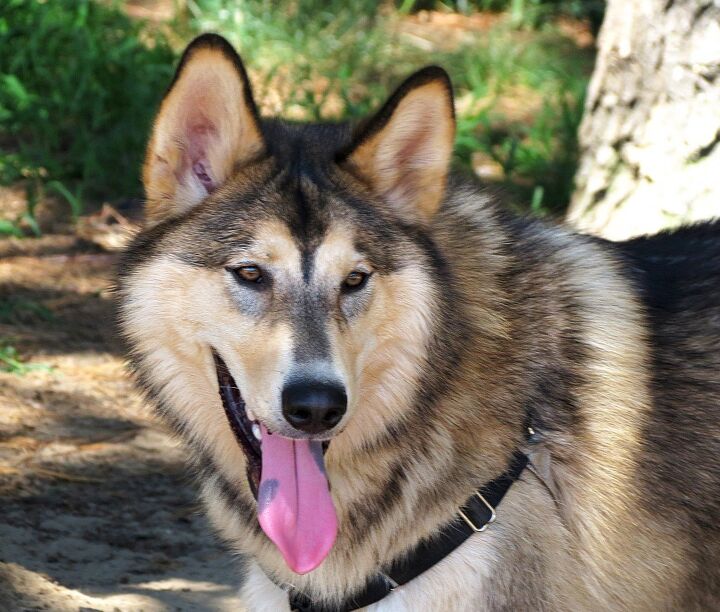
The origins of the Native American Indian Dog, and thus his pedigree, are widely debated. This is a relatively recent and a very rare breed, so there’s still not much we know about it. Considering the controversy surrounding the breed's origin and lineage, it's impossible to say with certainty which breeds – or animals – were actually used to originally create the breed.
Either way, as a hybrid breed, the Native American Indian Dog is not recognized by the American Kennel Club or its international counterparts. Owing to this, puppies won’t be eligible for official pedigree papers, but a responsible breeder should offer a certificate and/or health guarantee for their puppies.
Food/Diet
What does one feed a dog that looks like a wolf? You might think that Native American Indian Dog would prefer hunting for his own meals based off of his looks, but the truth is that these pooches love kibble same as the next pet dog. With a good choice of high-quality dry food for dogs, your new pet will be set up to thrive. Of course, you should choose kibble that’s made from high-grade, natural ingredients with meat being the first item on the list. Avoid cheap brands full of fillers and artificial dyes and additives. As a rule of thumb, Native American Indian Dog does good on dry food adapted to his unique needs- formula for large, active dogs is usually a good fit. Also, make sure that the kibble is age-appropriate, as fast growing Native American Indian Dog puppies will have different needs than, say, an aging senior.
Some NAID owners prefer going the raw food route or cooking their dog homemade meals. This can also be a good option for your pet, but only if you know what type of nutrients and ratios they need to stay healthy. Make sure to consult with a vet first if you plan on making your pet’s food- otherwise, you could be risking serious damage to their health.
The Native American Indian Dog is a highly intelligent breed that has the capacity to respond very well to training.
Training
The Native American Indian Dog is an intelligent breed that has the capacity to respond very well to training. These dogs are naturally eager to please, so they will respond well to a firm and consistent hand in training. Native American Indian Dogs are sensitive animals that tend to do best when their owner is firm in authority, but without being harsh or cruel. Consistency is the key to training these dogs properly.
Weight
A large- to extra-large-sized breed, the Native American Indian Dog weighs between 55 and 120 lbs. (25 to 55 kg) in adulthood. Of course, being this large, this dog will need a lot of free space on a day-to-day basis. Tiny houses and apartments are out of question – the Native American Indian Dog will simply feel cooped up and unhappy in these spaces. The best solutions are a spacious house, a fenced-in yard, or a ranch environment. These dogs simply need the space to run and exercise.
Temperament/Behavior
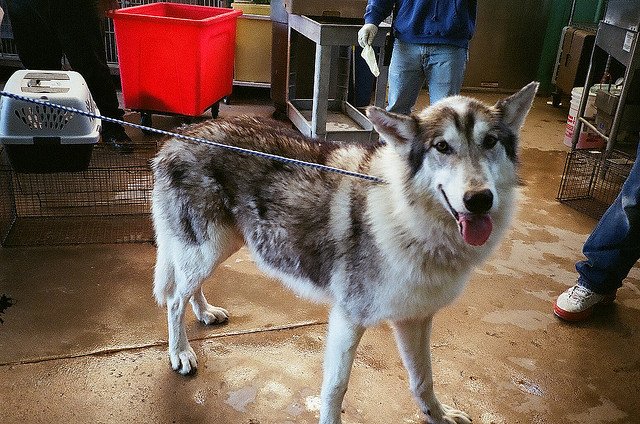
These dogs are known for their intelligence and loyalty. Not only are these dogs naturally eager to please, but they have been known to become extremely loyal and protective of their families. Due to their protective instincts, Native American Indian Dogs can be shy or aloof around strangers if they are not properly socialized from a young age.
Common Health Problems
Resilient and rugged, this breed is well suited for enduring the outdoors and a variety of the elements. Still, they are not exempt from suffering some health issues that are common for all dogs. The most frequently seen health problem affecting this breed is hip dysplasia. This condition is passed down genetically, so it is important to do a proper health screening before breeding your dog (and before purchasing a puppy from a breeder). As a large breed dog, caution should also be taken to prevent puppies from growing too quickly and putting unnecessary strain on the joints. To prevent overgrowth, do not keep these dogs on a puppy formula for more than 8 to 10 months.
But other than this, the Native American Indian Dog should be a very strong and adaptable breed, and will be just fine in a variety of conditions. Of course, you still want to provide them with ample care so they can be as healthy as possible!
Life Expectancy
The average lifespan of the Native American Indian Dog is around 14 years. That is quite the number! This makes them outstanding candidates for companion dogs. If you are looking for a four legged doggo friend to be by your side for a great part of your life, there is no better candidate than this breed. Especially if you consider how smart, sociable, and loyal they can be. And if your characters happen to match… this bond will be like no other!
Of course, your Native American Indian Dog cannot reach this incredible age all on their own. They will need a lot of your help and assistance in order to make it. This includes plenty of exercise, a healthy and balanced diet, regular vet checkups, and of course – a lot of love and affection. Only with these things in place can you expect your pet to live a long and healthy life by your side.
Exercise Requirements
The Native American Indian Dog has a lot of energy that will need to be spent adequately. As an active breed, the Native American Indian dog requires daily exercise. These dogs do not do well cooped up in a small apartment or kept in a crate – they need to have room to stretch their legs. For the most part, a long daily walk or a brisk jog will be enough to satisfy this dog’s exercise requirements. It would be ideal to have a fenced-in and protected yard where the dog will be able to run around and play as much as they wish. If this is not an option , the local park or green surface will have to do. Take them for a walk, play some fetch or anything of the sort – it will do wonders for your dog. After all, these things are in their blood, and will need to be taken care of.
Neglecting a Native American Indian Dog’s need for exercise and activity is the worst thing one can do. Without the exercise and free room, these dogs will quickly lapse into apathy and lethargy. From there, it is only the question of time when depression, loss of appetite, and even aggression will set in. Even if your day is hectic and busy, you will have to find a few minutes at least to let your pet run about and release that energy.
AKC
The Native American Indian Dog is not recognized by the AKC but it is recognized by the Native American Indian Dog Registry (NAID), the National Kennel Club (NKC) and the Dog Registry of America, Inc. (DRA). The NAID is centered primarily on the Native American Indian Dog breed, and is a good starting point if you want to link with enthusiasts and long-time owners. These kinds of clubs allow you to get first hand information straight from the source, and to learn all the important aspects of your new or future pet. Things like a proper diet, health basics, needs and wants, and their ideal looks can all be found out from these special clubs. After all, there is no better way to get crucial information than from long time owners that already made fast friends with Native American Indian Dogs.
Coat
The pride of every doggo out there is their coat. Elegant, shaggy, long, or short – the coat is one of the first things you will notice about a dog. Native American Indian Dogs come in two different sizes and exhibit two different coat lengths and colors. The coat may be short and dense with an undercoat to protect against wind or water – it can also be a dense undercoat with a long overcoat. The color of the coat ranges from silver to black, often with a broken or tortoiseshell pattern. Needless to say, these are majestic and beautiful dogs, and their coat complements their overall appearance.
While breeders claim that NAIDS are hypoallergenic dogs, they are not – they have a double coat and do shed. They will shed heavily when they lose their undercoat once a year in the spring so frequent brushing during this time will help to control shedding indoors. Of course, even outside of the shedding season, you will need to do some regular brushing and maintenance of your pet’s coat in order to maintain its quality and appearance. This can be as simple as some light brushing for a few minutes every day. Such a routine is ideal for many owners who are overwhelmed with daily chores. And an occasional visit to the groomers - as well as a bath - will keep everything in top shape. Don’t overlook this as proper hygiene and coat maintenance are directly related to your pet’s health.
Puppies
Because these dogs are highly intelligent, they can also be fairly strong willed. This being the case, it is essential that you start the socialization process as early as possible and maintain consistent obedience training throughout the puppy’s young life. Without early socialization, you risk your pet developing a set of highly unwanted behavioral issues. For example, a dog that has been generally neglected in the puppy period and has not been socialized, can develop traits such as aggression, anxiety, fear, and timidness. Getting early social interaction is mandatory for all dogs, and without it, you risk great imbalances later on. In situations where food and toys are involved, your pet might become snappy and aggressive, and even lash out to bite! Remedying these issues might require a lot of tedious work and training, all of which becomes harder as your pet grows older.
That is why socialization becomes crucial. Introduce your puppy to new friendly dogs, to children and adults, and bring them into a loving and caring environment. Do these steps early on and you will guarantee that your dog develops healthily, becoming a friendly and affectionate pet.
Photo credit: Kobidog/Wikimedia; staci myers/Flickr; Houndofthenight/deviantart

